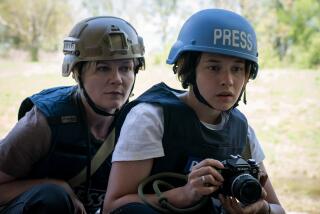Recalling an Underwater PR Coup
I was an early 1950s publicist, later an ad agency person, now an independent commercial writer. Thereâs little there to be emblazoned on a tombstone for future generations to revere.
But there was this one super stunt. . . .
It took place in 1951 and the client was Reo Motors in Lansing, Mich., an automotive pioneer then making trucks, not passenger cars. Big trucks. Like the military trucks that Reo had designed to grab a lucrative Army contract away from long-entrenched GMC, which tiny Reo did. That was a story in itself.
I remember sitting in the office of a nice man named Joseph Sherer, Reo president, and prodding him for details as to what made this Reo truck so outstanding.
âItâs got this new engine,â he said. âWe designed it to ford streams.â
âHow deep?â
âContract says three feet.â
âCould it go deeper?â
âI suppose.â
âFour feet? Five?â
âProbably, if we added air intake and exhaust snorkels. Let me call in Bill Walworth.â He was Reoâs chief engineer.
Well, the bottom line was that neither Walworth nor any of the Army people knew what was the bottom line for this truck. No matter. With that flimsy information, I went through all levels of people at the Pentagon and at the major media in New York, and planned a series of press demonstrations--magazines, newspapers, newsreels (remember them?), radio--of the truck running in water, having gotten their attention by annointing the truck with a nickname: the Eager Beaver.
My big coup was getting Life magazine to assign a staff photographer. Turned out to be Peter Stackpole, being transferred to New York after a stint in Los Angeles on the movie beat.
I selected Silver Springs, Fla., for this demonstration, because of its crystal-clear water. Cameramen were to be in glass-sided boats.
The big truck eased off the bank and entered water over three feet in depth . . . and stopped. The driver couldnât see. A half turn of the Eager Beaverâs wheels churned up clouds of silt. Underwater photography was impossible. It took hours for the silt to settle down, to permit another cautious move forward by the truck, which, in the process, dislodged several big timbers that had been embedded in the mud as retaining walls.
I leaned on a railing, in despair, and watched this whole demonstration go--you might say--down the drain.
Then there was a tug at my elbow.
âI think I can help you.â
I looked at a rather tall man. Dark hair. He was standing beside a pick-up truck that contained some strange gadgets that made no sense to me. But anyone who said he could help me at that moment did.
âHow?â
âThis is not where you should be. Thereâs a place near the Gulf called Rainbow Springs. Like this, only no silt. Just 20 or so miles away. Hard, white stone bottom, natural surroundings and no mud. Youâll get great pictures.â
He had my attention.
âWhatâs more,â he continued, âI have a thing here Iâve invented called the Aqua-Lung. Your Army driver can wear my device and can drive below the surface, if the truck can take it.â
That was Jacques Cousteau.
We did move everything to Rainbow Springs. We did equip our Army driver with an Aqua-Lung and we did make a major spread in Life, with a full-page underwater shot of the driver, wearing an Aqua-Lung, driving the Reo truck with ducks paddling over his head. The engine was turned off and turned over again in 11 feet of brilliant water. The resulting publicity was incredible.
It was a spectacular PR success for me. It got me a bonus from Reo. It became one of the major publicity campaigns since World War II.
Maybe it did something for Jacques Cousteau. Every story about the Reo truck also promoted the Aqua-Lung that made the stunt possible.
Years passed to become decades. I became a dedicated fan of this man named Cousteau, whose undersea films first appeared on American television in 1954, and actually forgot that early meeting.
It was only in recent weeks, while reading a story about his remarkable new vessel moored in Newport Beach, that I saw his name in print associated with his Aqua-Lung, and it all flooded back into my memory.
I certainly realize how his genius affected my life. And, just maybe, how my little PR stunt affected his. He couldnât churn out Aqua-Lungs fast enough, Iâm told, after that all-media exposure.
It even affected Pete Stackpoleâs career. This was his first underwater photographic assignment. He took professional advice from a local photographer who made his living by selling 50-cent prints to tourists.
From that day on, Pete was Lifeâs automatic expert on any assignment that even remotely involved underwater photography. He never returned to Hollywood.
See what you did, Mr. Cousteau?






